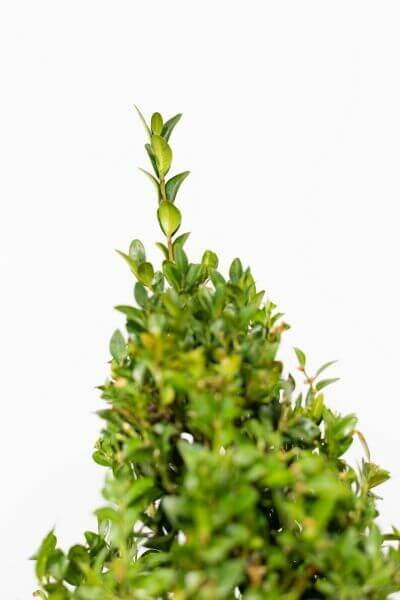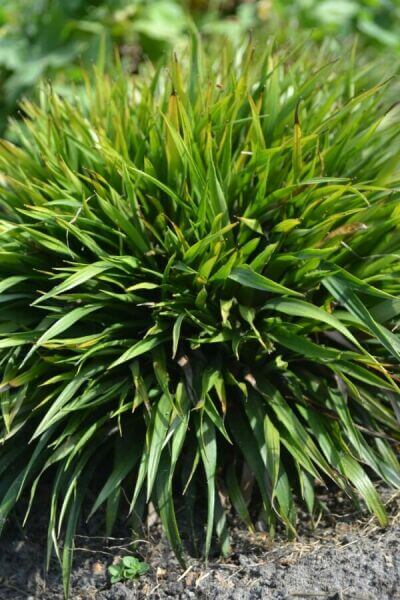Hedging Plants For Autumn Color
Hedging Plants For Autumn Color
Blog Article
Best Hedging Plants For Green Dividers
Improve your garden's attraction with rich hedge varieties such as Yew (Taxus), Thuja, Laurel, Photinia, and Bamboo, commemorated for their structural integrity and ecological benefits.
Yew and Thuja supply evergreen coverage and winter season resilience, while Laurel offers rapid development and broad, fragrant leaves.
Photinia includes seasonal appeal with its vibrant red foliage, and Bamboo provides a low-maintenance, peaceful ambiance.
These hedges improve air quality, lower noise, and produce tranquil, personal spaces.
Correct planting, spacing, and maintenance guarantee energetic growth and ecological harmony.
Explore how these lavish ranges can elevate your garden's beauty and well-being.
Secret Takeaways
Change Your Garden With Lush Hedge Varieties
- Select Yew for its thick, evergreen development and unrivaled durability.
- Go with Laurel for its quick growth and broad leaves, guaranteeing quick personal privacy.
- Choose Photinia for its vibrant seasonal foliage, which turns a striking dark red.
- Use Bamboo for a low-maintenance, winter-hardy hedge with visual appeal.
- Area plants 2-3 per meter and prune frequently for optimum development and health.
Popular Hedge Plants
When changing a garden with lavish hedge ranges, it's necessary to consider popular hedge plants such as Yew, Thuja, Laurel, and Photinia due to their distinct qualities and advantages.
Yew (Taxus) is highly esteemed for its longevity and dense, green growth, making it a prime choice for enduring landscapes.
Thuja is noted for its evergreen foliage and robust winter strength.
Photinia includes seasonal vibrancy with red leaves that darken with time, creating vibrant visual appeal.
Laurel uses fast development and aromatic, broad leaves, suitable for quick personal privacy.
Furthermore, Bamboo is an exceptional option for ambiance, offering a low-maintenance, winter-hardy option that boosts the garden's visual with its sophisticated, swaying walking sticks.
These selections cater to a range of horticultural requirements and choices.
Advantages of Garden Hedges
Garden hedges provide a wide variety of benefits, making them an important addition to any landscape. These natural barriers are cost-efficient to execute and offer significant wind defense, improving air circulation and adding to noise decrease. The thick foliage of hedges like Thuja and Beech makes sure personal privacy by obstructing presence, producing a secluded and serene environment.
Hedges likewise play an important role in microclimate guideline, offering a steady environment that cultivates plant growth and minimizes temperature changes. Their intricate leaf structures filter toxins, improving air quality and adding to a healthier garden ecosystem.
Furthermore, hedges excel in sound reduction, soaking up and deflecting acoustic waves to lower ambient sound levels. This double functionality of supplying both acoustic and visual privacy boosts the total harmony and aesthetic appeal of any garden.
Planting and Upkeep Tips
For a successful hedge, precise preparation of the planting area is important. Ensure the soil has appropriate pH and drain to support strong root advancement.
Space the plants appropriately for the picked species. Water the hedge regularly throughout its initial development phase, adjusting as required with seasonal modifications.
Execute a methodical bug control and disease prevention technique, utilizing chemical or natural treatments when essential. Regularly examine for aphids, termites, and fungal infections.
Apply mulch to maintain moisture and suppress weeds. Seasonal pruning promotes dense development and air blood circulation, essential for plant health.
Following these guidelines will help you cultivate a dynamic, well-maintained hedge that improves the appeal of your garden.
Spacing and Cutting Standards
Spacing and Cutting Standards
Correct spacing and trimming are important for cultivating healthy, aesthetically appealing hedges. Adequate spacing ensures each plant gets enough nutrients, light, and air flow.
Follow these standards for ideal hedge upkeep:
- Spacing: Position hedge plants 2-3 plants per meter to motivate robust development.
- Pruning Strategies: Routine pruning is essential for maintaining wanted hedge height and shape. Cut brand-new development in summertime and cut back older wood during winter.
- Seasonal Care: Adjust trimming schedules and methods according to seasonal requirements to ensure plant health.
- Hedge Height: Frequently display and cut to preserve the desired hedge height and attain consistent aesthetics.
Following these actions will guarantee your hedge grows, boosting both the appeal and performance of your garden.
Selecting the Right Hedge
Choosing the Right Hedge
Selecting the proper hedge includes evaluating factors such as mature height, foliage density, and ecological strength. Successful hedge plant choice needs understanding each types' development attributes and site-specific adaptability.
For instance, Yew (Taxus) provides excellent longevity and dense development, while Thuja is notable for its winter season resilience. In addition, considering maintenance requirements is important; fast-growing species like Laurel or Privet need regular trimming, whereas low-maintenance choices like Bamboo or Ivy may be preferable for those looking for very little upkeep.
Environmental factors such as soil type, light availability, and moisture conditions should likewise assist the selection procedure. This mindful method guarantees the picked hedges will thrive, providing both practical and aesthetic benefits to the garden landscape.
Shipment and Planting Guidance
To ensure your hedge plants prosper, they must be provided by specialized couriers and planted immediately upon arrival.
Follow these vital steps for successful planting:
- Soil Preparation: Improve the soil with raw material to improve drain and nutrient content.
- Planting Depth: Create a trench two times the width and equivalent to the depth of the root ball.
- Watering Methods: Water thoroughly after planting, keeping the soil consistently moist but not saturated.
- Mulching: Use a layer of mulch to keep moisture and reduce weeds.
Client Support and Service
Offered the vital role of prompt support in horticultural pursuits, our customer assistance team is readily available 6 days a week through telephone, email, and social media to use expert guidance and swiftly attend to any concerns. Their devotion to quick reaction times ensures consumer fulfillment by solving inquiries connected to plant health, optimal planting approaches, and maintenance schedules.

Schedule
----------------------
Within 24 hr
This detailed support system, enhanced by an excellent 9.3/ 10 customer ranking, highlights our commitment to enhancing the gardening experience for every single client.
Regularly Asked Questions
How Long Does It Consider Hedge Plants to Establish?
Hedge plants usually need one to three years to end up being completely developed, with the precise period varying by types and growing conditions.
Effective care during this important period is vital for robust growth. Consistent watering, alert weed control, and appropriate fertilizer application are essential in promoting strong root development.
For instance, fast-growing types like Laurel may develop faster, while slower-growing varieties such as Yew might take longer. Thorough upkeep accelerates the establishment procedure, leading to dense and healthy hedges.
What Are the Best Hedge Plants for Privacy?
The concern of the very best hedge plants for privacy includes examining evergreen and deciduous options.
Evergreen hedges like Thuja, Laurel, and Cypress provide year-round coverage, guaranteeing constant personal privacy.
On the other hand, deciduous hedges such as Beech offer seasonal privacy, shedding leaves in colder months.
Key maintenance pointers for personal privacy hedges include regular trimming, fertilizing in spring, and proper spacing-- generally 2 to 3 plants per meter.
Furthermore, consistent watering and persistent weed removal are essential for promoting healthy, dense growth.
Can Hedge Plants Attract Wildlife to My Garden?
Yes, hedge plants can attract wildlife to your garden by providing necessary benefits like shelter, food, and nesting websites, therefore enhancing local biodiversity. Yew, holly, and laurel are exceptional for attracting birds, while ivy supports a variety of insects.
However, it is very important to keep in mind that there are some downsides, such as increased upkeep to handle bugs and routine maintenance. Thoroughly selecting and maintaining hedge varieties can help balance these benefits and disadvantages, ultimately promoting a sustainable and lively ecosystem in your garden.
Are There Any Blooming Hedge Plants Available?
Yes, there are flowering hedge plants available that can enhance the charm of your garden.
For instance, Elaeagnus, also called Olive Willow, produces aromatic white flowers in the fall, including a touch of elegance.
Photinia, another popular choice, showcases dynamic red leaves that develop into an abundant green, developing a dynamic visual impact throughout the seasons.
To make sure these plants grow, it's important to practice appropriate pruning methods and seasonal upkeep, such as cutting brand-new development in the summer and cutting back in the winter.
These steps will assist preserve the health and visual appeal of your blooming hedges.
How Do I Avoid Bugs in My Hedge Plants?
To avoid bugs in hedge plants, use natural pest control approaches and maintain proper hedge care. Introduce advantageous bugs like ladybugs, which take advantage of hazardous insects, to produce a balanced ecosystem.
Regularly examine your hedges for Additional reading signs of infestation and immediately eliminate any affected parts to prevent the spread. Ensure the health of your hedges by using well balanced fertilizers and supplying adequate water.
Utilize mulching to maintain soil wetness and appropriate spacing to decrease plant stress and promote robust development. These practices jointly help in reducing pest issues and keeping a healthy hedge.
Conclusion
In essence, selecting the best hedge varieties such as Yew, Thuja, and Laurel can change any garden into a relaxing haven. These plants provide year-round plant, boost aesthetic appeal, and offer useful benefits like noise decrease and wind security.
Proper planting strategies, accurate spacing, consistent watering, and seasonal trimming are essential for ideal growth.
Trusted shipment services and expert consumer support ensure a smooth experience from purchase to planting, making it simpler than ever to raise your outdoor area.
Garden hedges provide a wide range of advantages, making them a valuable addition to any landscape. These natural barriers are cost-effective to execute and provide considerable wind protection, improving air circulation and contributing to noise decrease. The dense foliage of hedges like Thuja and Beech makes sure personal privacy by blocking exposure, developing a secluded and peaceful environment.

Pruning Strategies: Routine pruning is important for maintaining wanted hedge height and shape. Cut new development in summertime and cut back older wood during winter season.
Report this page